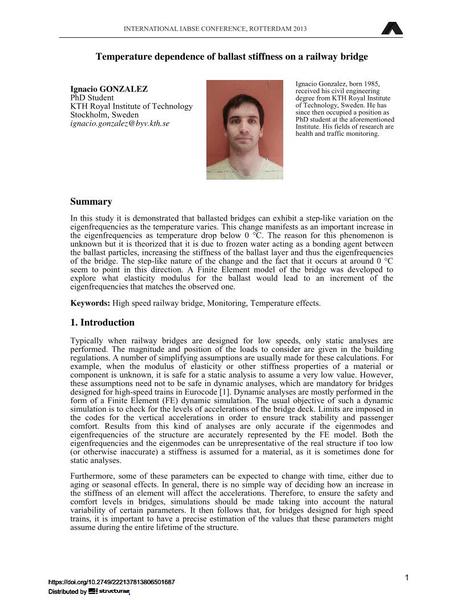Temperature dependence of ballast stiffness on a railway bridge

|
|
|||||||||||
Bibliographic Details
| Author(s): |
Ignacio Gonzalez
|
||||
|---|---|---|---|---|---|
| Medium: | conference paper | ||||
| Language(s): | English | ||||
| Conference: | IABSE Conference: Assessment, Upgrading and Refurbishment of Infrastructures, Rotterdam, The Netherlands, 6-8 May 2013 | ||||
| Published in: | IABSE Conference, Rotterdam, May 2013 | ||||
|
|||||
| Page(s): | 368-369 | ||||
| Total no. of pages: | 7 | ||||
| Year: | 2013 | ||||
| DOI: | 10.2749/222137813806501687 | ||||
| Abstract: |
In this study it is demonstrated that ballasted bridges can exhibit a step-like variation on the eigenfrequencies as the temperature varies. This change manifests as an important increase in the eigenfrequencies as temperature drop below 0 °C. The reason for this phenomenon is unknown but it is theorized that it is due to frozen water acting as a bonding agent between the ballast particles, increasing the stiffness of the ballast layer and thus the eigenfrequencies of the bridge. The step-like nature of the change and the fact that it occurs at around 0 °C seem to point in this direction. A Finite Element model of the bridge was developed to explore what elasticity modulus for the ballast would lead to an increment of the eigenfrequencies that matches the observed one. |
||||
| Keywords: |
high-speed railroad bridge monitoring temperature effects
|
||||
